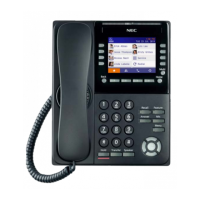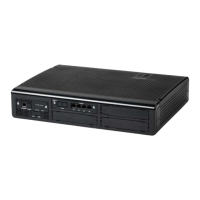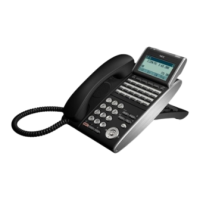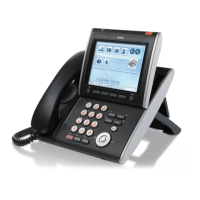Issue 1.0 UNIVERGE SV8100
2 - 54 Answer Key
Answer Hold
Guide to Feature Programming
The Level 1, Level 2 and Level 3 columns indicate the programs that are assigned when programming
this feature in the order they are most commonly used. These levels are used with PCPro and WebPro
wizards for feature programming.
Level 1 – these are the most commonly assigned programs for this feature.
Level 2 – these are the next most commonly assigned programs for this feature.
Level 3 – these programs are not often assigned and require an expert level working knowledge of
the system to be properly assigned.
Program
Number
Program Name Description/Comments Assigned Data
Level
1 2 3
22-02-01 Incoming Call Trunk Setup Assign the incoming trunk type for
each trunk.
Incoming Type for Day/
Night Mode (1~8):
0 = Normal
1 = VRS (second dial
tone if no VRS
installed)
2 = DISA
3 = DID
4 = DIL
5 = E&M Tie line
6 = Delayed VRS
7 = ANI/DNIS
8 = DID(DDI) Mode
Switching
(default = 0)
3
22-04-01 Incoming Extension Ring Group
Assignment
Assign extensions to Ring Groups.
Use this program to assign
extensions (up to 32) to Ring
Groups. Calls ring extensions
according to Ring Group
programming. There are 100
available ring groups.
Maximum eight digits
Default:
Extensions 101~108
(first eight ports) ring for
incoming Ring Group 1
calls. No other
extensions ring for
incoming Ring Group 1
calls.
3
22-05-01 Incoming Trunk Ring Group
Assignment
Assign trunks to incoming Ring
Groups. Use this program to assign
Normal Ring Trunks (Program
22-02) to Incoming Ring Groups
(Program 22-04).
Incoming Group
Number for Day/Night
Mode (1~8):
0 (No Setting)
001~100
(Incoming Group)
102 (In-Skin/ External
Voice Mail or VM8000
InMail)
(default = 1)
3

